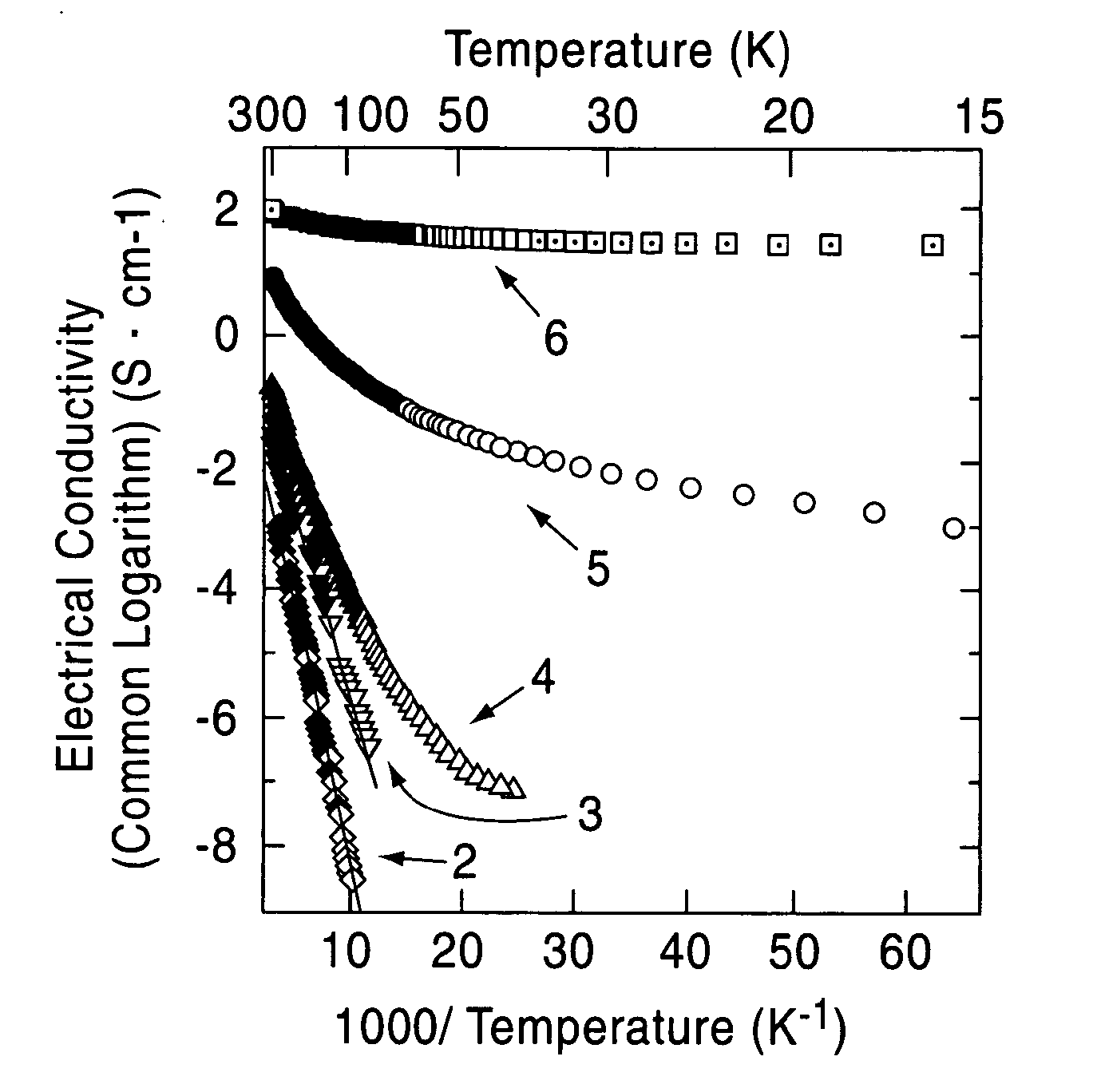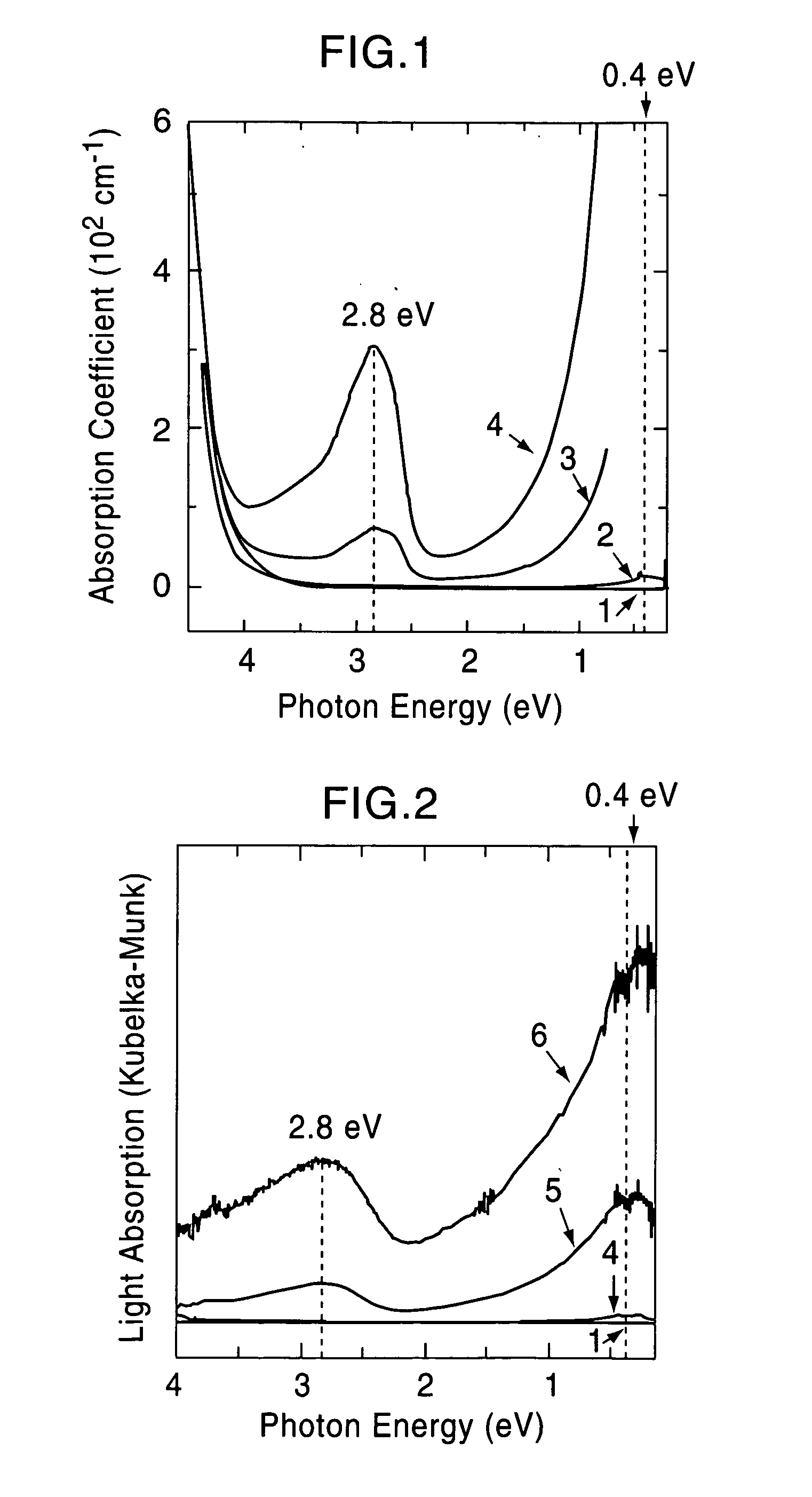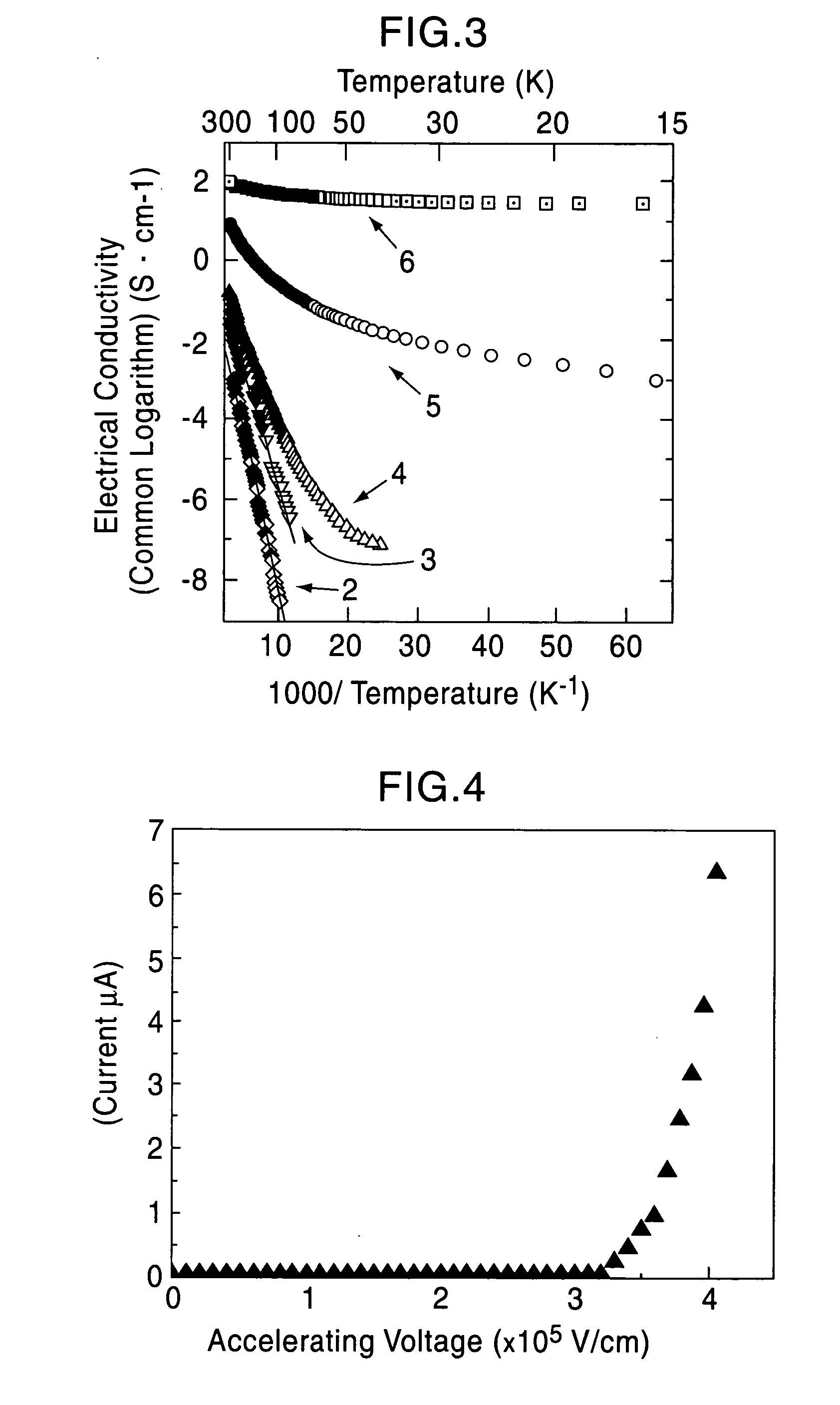Electroconductive 12ca0.7al203 and compound of same type, and method for preparation thereof
a technology of electroconductive and compound, applied in the field of electroconductive 12 and compound of the same type, can solve the problems of low electrical conductivity, difficult to obtain a material having a high electrical conductivity, and difficulty in clathrate a large amount of alkaline metal or ions thereof inside the compound, and achieve the effect of high purity
- Summary
- Abstract
- Description
- Claims
- Application Information
AI Technical Summary
Benefits of technology
Problems solved by technology
Method used
Image
Examples
example 1
[0060] A single crystal C12A7 compound formed by a floating zone method (FZ method) was processed into a thin plate having a size of 0.4 mm×4 mm×7 mm, and two surfaces thereof were mirror polished (sample 1). This single crystal thin plate and a calcium metal piece were placed in a quartz tube, and the tube was then vacuum sealed. Five of the samples were maintained at 700° C. for different times, that is, 4, 12, 18, 40, and 240 hours (the crystal thin plates processed for different times are called sample 2, 3, 4, 5, and 6, respectively). As the holding time was increased, the C12A7 single crystal thin plates were sequentially colored in yellow, green, and black in that order; however, the surface layers were each transparent, and from an x-ray diffraction spectrum, it was confirmed that the surface layer is calcium oxide. It was understood from an x-ray diffraction pattern that a crystal thin plate obtained by removing the calcium oxide layer retains the crystal structure of C12A7...
example 2
[0064] After a fine powder of a C12A7 compound was molded by a uniaxial press under a pressure of 300 kg / cm2, additional molding was performed by a hydrostatic pressure press under a pressure of 2,000 kg / cm2. After two of the molded bodies thus formed were placed in respective carbon crucibles each capped with a lid, the crucibles were further placed in respective alumina crucibles, and heating was then performed at a temperature increasing rate of 400° C. / hour to 1,550° C. for one crucible and to 1,600° C. for the other crucible. Subsequently, the crucibles were held at the above respective temperatures where the molded bodies are melted for 1 hour and were then cooled to room temperature at a temperature decrease rate of 400° C. / hour for the solidification.
[0065] The solid materials thus obtained were dense and had black green color, and the degree of blackness of the solid material held at 1,600° C. was higher than that of the solid material held at 1,550° C. The electrical cond...
example 3
[0069] A C12A7 thin film deposited on a MgO substrate was maintained at 600° C. and was implanted with Ar+ ions accelerated at approximately 360 kV. The thin film before ion implantation showed insulating properties; however, when Ar+ ions were implanted at a dose of 5×1017 / cm2, an electrical conductivity of approximately 1 S / cm was obtained. From a Rutherford backscattering spectrum, it was confirmed that Ar+ ions are not contained in the film.
[0070] Accordingly, it is believed that after Ar+ ions collide with the free oxygen ions, the free oxygen ions are kicked out of the film by a knock-on effect, and as a result, in order to maintain the charge neutrality, electrons are allowed to remain in the film. That is, by implanting Ar+ ions into a C12A7 thin film at high temperature, electrons are substituted for free the oxygen ions, and as a result, electrical conductivity can be realized.
PUM
| Property | Measurement | Unit |
|---|---|---|
| electrical conductivity | aaaaa | aaaaa |
| electrical conductivity | aaaaa | aaaaa |
| temperature | aaaaa | aaaaa |
Abstract
Description
Claims
Application Information
 Login to View More
Login to View More - R&D
- Intellectual Property
- Life Sciences
- Materials
- Tech Scout
- Unparalleled Data Quality
- Higher Quality Content
- 60% Fewer Hallucinations
Browse by: Latest US Patents, China's latest patents, Technical Efficacy Thesaurus, Application Domain, Technology Topic, Popular Technical Reports.
© 2025 PatSnap. All rights reserved.Legal|Privacy policy|Modern Slavery Act Transparency Statement|Sitemap|About US| Contact US: help@patsnap.com



